Japanese calligraphy: features, styles and set choices

Japanese calligraphy is not just the ability to write beautifully and cleanly hieroglyphs. It is one of Japan's favorite and popular art forms. Calligraphic works are valued as highly as paintings and sculptures. Shodo (The Way of Writing), along with Bushido (The Way of War) and Sado (The Way of Tea), is one of the practices leading to the understanding of life values, which has its own philosophy and principles. In this article, we will briefly describe what the ancient art is and how to start practicing the Way of Writing.
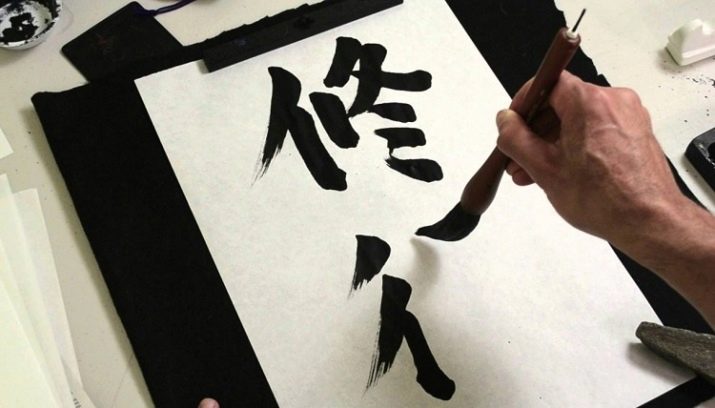
History of origin
The art of writing came to Japan presumably from China. Samples of Chinese characters were brought to the Land of the Rising Sun by wandering Buddhist monks. This is why Zen Buddhism has had a tremendous impact on Shodo philosophy. Among the early practitioners were monks, courtiers, and emperors themselves, who initially carefully studied and followed Chinese writing.
Over time, their own culture and creative impulses of the masters created various non-traditional directions, merging with their native language. This is how Shodo was born.
From the aristocracy and samurai, the art of calligraphy gradually spread to the general population and became one of the favorite types of Japanese creativity.
Shodo thrives in Japan today.
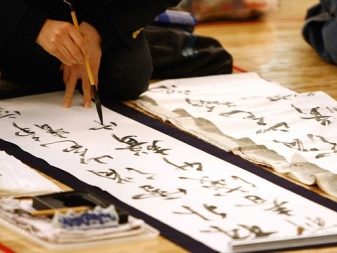
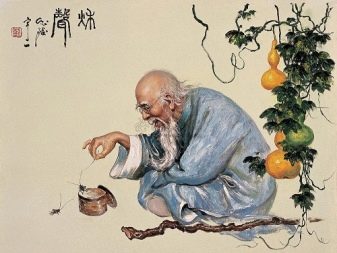
Calligraphy training starts from childhood. This is a compulsory discipline in the lower grades. Older students learn the art of optional writing, like music and painting. Competitions, competitions, festivals are traditionally held among students, where the best are determined in writing. In the largest universities in Japan, faculties have been opened that train teachers and masters in the art of Shodo.
Shodo specimens can be found everywhere. Exhibitions of calligraphic works are held. Images with hieroglyphs are present at celebrations, cultural events, and decorate interiors.
Contemplation and writing of hieroglyphs is an integral part of the famous tea ceremony, the masters of which I comprehend Shodo as carefully as I do my work.
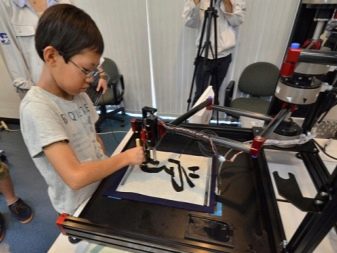
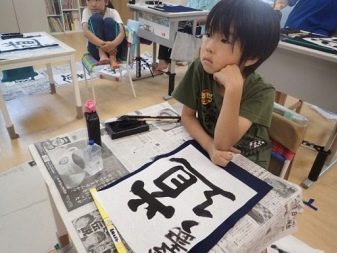
Styles
Traditionally, there are three main directions in Japanese calligraphy.
- Kaisho is the charter. Literally translated as "spelling". Outlines are clear, clear, laconic. After drawing the line, the brush must be torn off the sheet. Hieroglyphs are similar to squares and are similar to the image of printed characters. This style should be learned first.
- Gyosho - semi-italic... It is characterized by smooth, rounded, graceful lines.
- Sosho - italic, cursive... Fast, dashing, flying lines. The hieroglyphs executed in this way are revered as works of art. It is often difficult for a literate Japanese to make out the content of a hieroglyph. In such cases, they turn to experienced specialists.
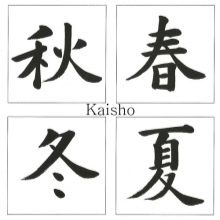
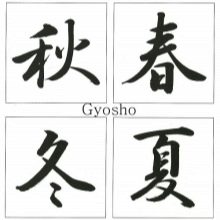
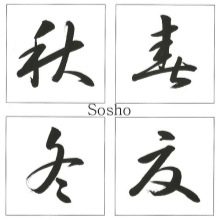
Historically, different styles have been used to write works in different literary genres:
- serious historical works set out by the charter;
- plays - cursive, stretched in width and flattened at the top;
- songs, poems - a special type of Kana italics, characterized by a vertically elongated flowing line, sophistication and elegance of lines.
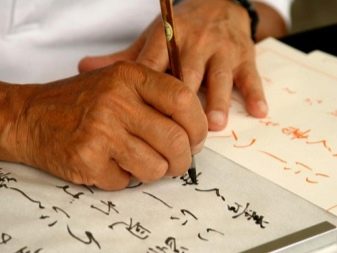
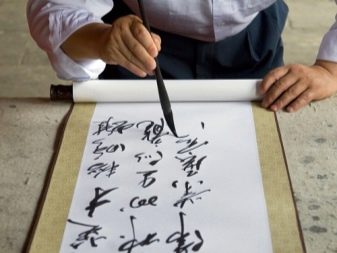
Basic principles
The study begins with the mastery and development of writing skills in various styles. Particular attention is paid to posture, correct positioning of the hand (grip of the hand, position of the hand).
Like any Japanese practice, Shodo is full of deep meaning. Fundamental Principles: Modesty, Purity, and Inner Spiritual Strength.
A white sheet of paper is emptiness. Black symbols are "yang" (masculine) and "yin" (feminine). By means of a brush, expressing the beauty of the soul and at the same time getting aesthetic pleasure from the process itself and contemplating the result is the main goal. It is achieved by the harmony and elegance of lines, the balance of elements among themselves, the balance of elements and emptiness.
Qualities of a Shodo practitioner: utmost concentration, impeccable technique, spiritual preparation. That is why each calligraphic work is unique. It is created in a single impulse of the soul and reflects the state of mind of the artist, his mood, thoughts, feelings at the moment of drawing hieroglyphs. It is impossible to repeat and create this anew.
Shodo is an art of the moment that lasts for centuries.
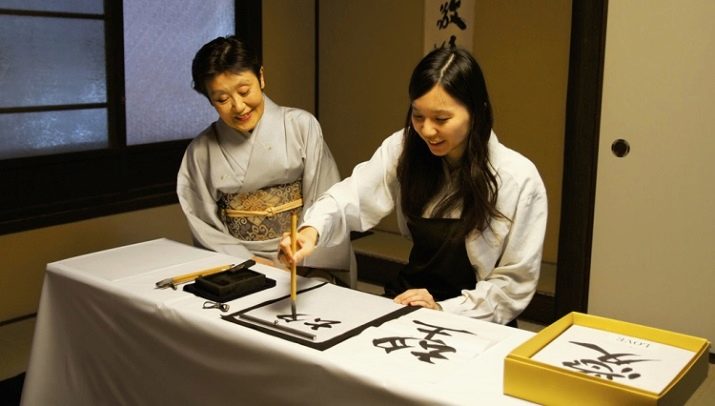
Tools and Kits
Practitioners of the Writing Path use seven subjects:
- sumi - black ink;
- hansi - traditional Japanese paper made from rice straw;
- suzuri - heavy metal ink-mortar for grinding solid ink;
- rebel - a metal object for pressing the paper while writing;
- shitajiki - soft black mat, the purpose of which is to create a flat surface;
- fude brush - large hieroglyphs are displayed in larger sizes, in small ones - the artist's signature and small inscriptions;
- mizusari - a vessel for water.
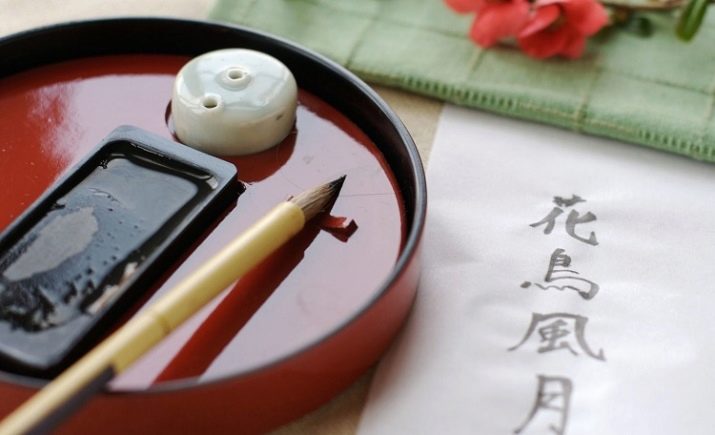
They teach Japanese calligraphy in special courses and master classes. The Internet contains many video tutorials for beginners to practice the Way of Writing.
To master the technique on your own at home, it is enough to purchase a pointed brush, black ink and paper, watch training videos and start practicing.
For a deeper connection with the Japanese writing tradition We recommend purchasing a Japanese calligraphy kit that has all the traditional items. Paper can be included in the set or purchased separately.
Sets in sturdy cases, beautifully designed wooden boxes are more expensive.
Working with such tools will bring even greater aesthetic pleasure.
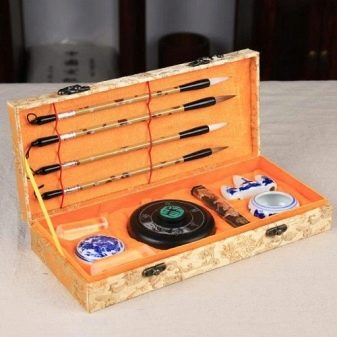
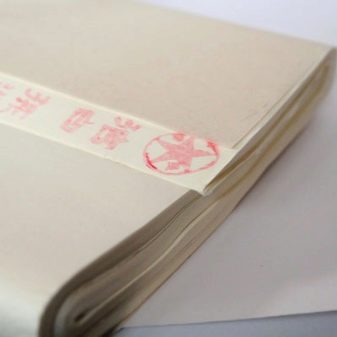
The more advanced the master, the higher his brush requirements.... The best hand is firm, sensitive to subtle finger movements, and has a sharp tip. These characteristics give it the ability to hold large quantities of paint and water.
For this purpose, the hairs on the brush are neatly trimmed. The handles of the brushes are made from bamboo or inexpensive wood. To obtain a soft brush, goat hair is taken, for hard ones - dog fur or a column. The most expensive tassels contain deer, badger and bear hair. Combined brushes are considered the best, consisting of soft and hard hair.
Small batches to order make an exclusive - brushes from swan down and tiger hair.
The real masters have a variety of brushes, each of which is designed for a specific purpose.
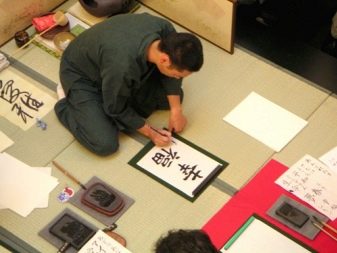
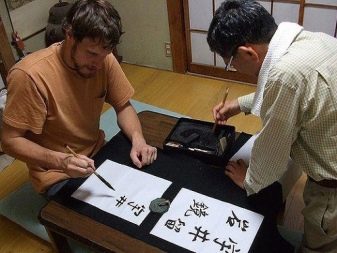
Education
Armed with everything you need to write, you can make the first samples. It is better to start by drawing simple hieroglyphs: tree, day, man, mouth.
Hold the brush correctly with your thumb, middle and forefinger, squeezing it approximately in the middle. It may seem inconvenient at first, but skill will come with experience.
Several basic techniques exist in Shodo:
- line stop;
- hook;
- smoothly ending line;
- spray.
Lines are drawn smoothly and slowly with clicks in certain places.
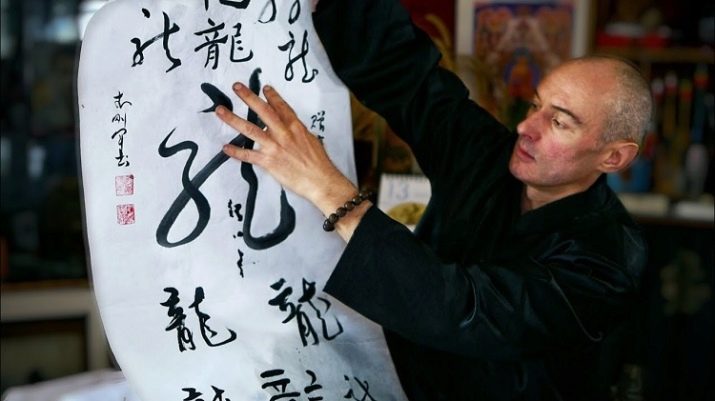
Don't be discouraged if it doesn't work out very well right away. Remember, craftsmen have been studying this art for years, putting a lot of effort into it.
You can find out about the Japanese and calligraphy class by watching the video below.







